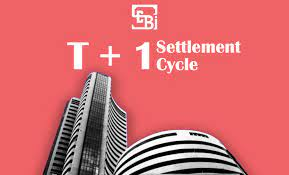
The Indian stock market is set to adopt a T+1 settlement cycle, which means that transactions will be settled on the next trading day, rather than the current T+2 cycle. This move is expected to bring the Indian stock market in line with global standards and improve efficiency in the trading process.
The T+1 settlement cycle was introduced in the Indian stock market in 2013, but it was optional for market participants. However, starting in April 2023, the T+1 settlement cycle will be mandatory for all market participants, including stockbrokers and depository participants. This will bring the Indian stock market in line with global standards, where T+1 settlement is the norm.
The T+1 settlement cycle will improve efficiency in the trading process as it will reduce the time required to complete a trade. Under the T+2 settlement cycle, it takes two days for a trade to be settled. This means that a trade executed on Monday will be settled on Wednesday. Under the T+1 settlement cycle, the same trade will be settled on Tuesday, reducing the time required to complete the trade by one day.
The T+1 settlement cycle will also reduce the risk of failed trades. Under the T+2 settlement cycle, if a trade fails to be settled on the second day, it is considered a failed trade. Under the T+1 settlement cycle, the failed trade will be identified and rectified on the next trading day, reducing the risk of failed trades.
In July 2001, SEBI implemented a rolling settlement cycle. Previously, all settlements were done on a specified day—Fridays on the BSE and Tuesdays on the NSE. This system has several issues, including inadequate delivery, high liquidity, and frequent defaults. Following the implementation of Demat accounts in 1996, SEBI implemented the rolling settlement cycle. Initially, a T+5 settlement cycle was used, which meant that settlements were made within 5 days after the trading day. The market regulator reduced it to T+3 cycle in 2002, and subsequently to T+2 cycle in April 2003, which is still in use today.
